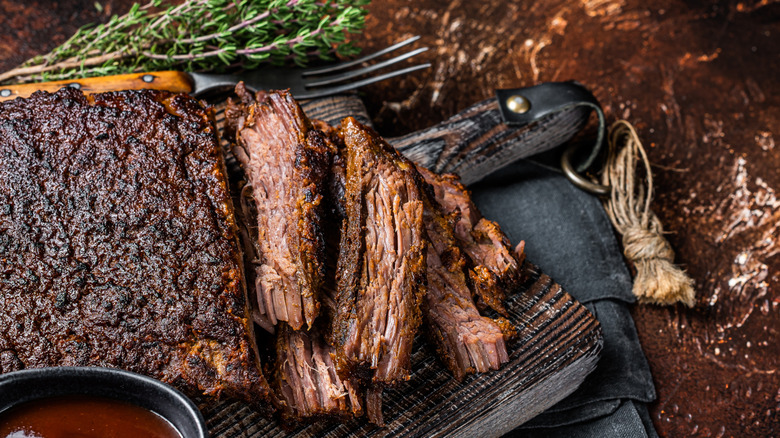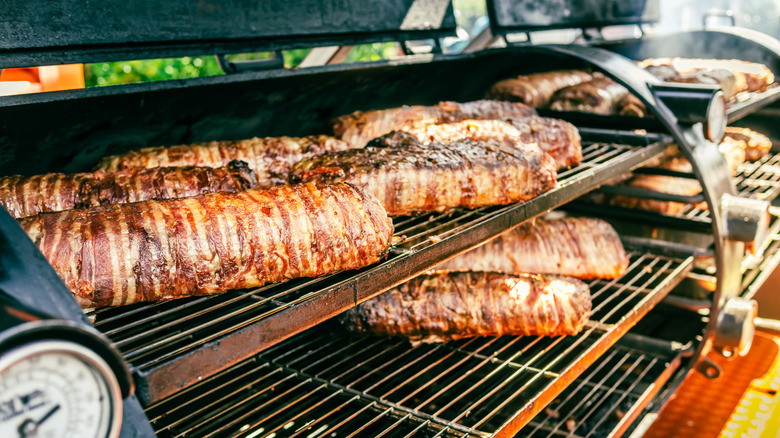The Surefire Sign You've Smoked Your Meat With Flawless Precision
When it comes to preparing meat, grilling is good — but, smoking is superb. Along with sharpening the savory flavors of your cuts, smoking adds another layer of complexity by way of the wood selected. Used hickory? Expect your brisket to be infused with sweet, bacon-like notes. Prefer a more potent punch? Give ribs an intense kick by burning logs of mesquite. You can also mix different wood chips to give your meat a totally unique taste. Now, while there are all sorts of combinations you can use to smoke meat, they should all lead to one desired result in terms of color and texture.
According to Robbie Shoults, celebrity chef and third-generation owner of Bear Creek Smokehouse as well as owner of Marshall Mercantile and High Horse 1898 in Marshall Texas, there are two things to look out for when gauging whether you've smoked your stuff to utmost perfection. The first simply requires a keen eye for color. "You will know your meat has been adequately smoked when it turns a nice pecan brown color," Shoults tells Tasting Table.
While the time it takes to turn this shade depend on the type of meat, smoker, and wood used, keeping track of the crust's color can definitely help you decide when it's good to go. But, you should also pay attention to texture. As Shoults adds, "When pressed on lightly, it will have a tender feel." Then, you'll know your meat has reached peak smokiness.
Other ways to perfect your smoked meats
In addition to following Shoults' advice, there are some other tips you need to keep in mind when cooking with a smoker to ensure a flawless feast. For one, you might want to study up on the absolute best cuts of meat for smoking. Brisket, ribs, and tri-tip steak are a safe bet. But, when it comes to choosing steak to smoke, always refer to the rule we learned from David "Papi" Einhorn, partner at Papi Steak in Miami: the thicker and more marbled the meat, the better suited it is for a long and slow smoke. Of course, beef isn't your only option. Pork shoulder, chicken wings, and even duck breast make great candidates for smoking since they're all thicker, fattier cuts that can hold up during the cooking process.
Next, be sure to control your heat. Depending on the type of smoke you're going for, you can risk cooking at temperatures that are too cold or too hot, if you're not diligent. You don't just want to crank up the flames and leave your smoker alone for a few hours. Instead, use a remote probe thermometer and keep your eye on it.
Finally, make sure your cuts stay nice and moist as you smoke, lest you end up with a bone-dry hunk of leather. Brining your meat ahead of time can help keep it juicy on the inside, as can placing a drip pan inside the smoker, which will create a more humid environment.

